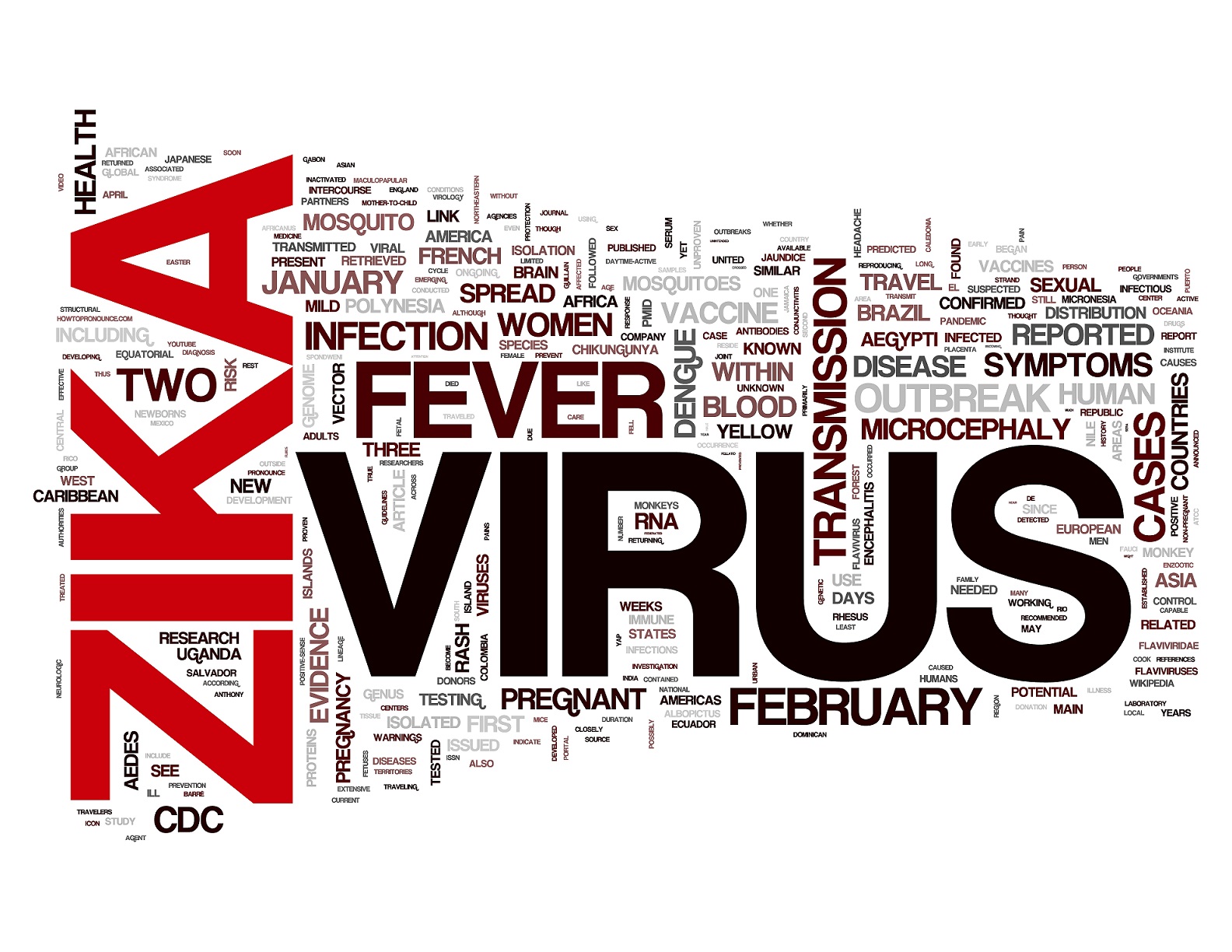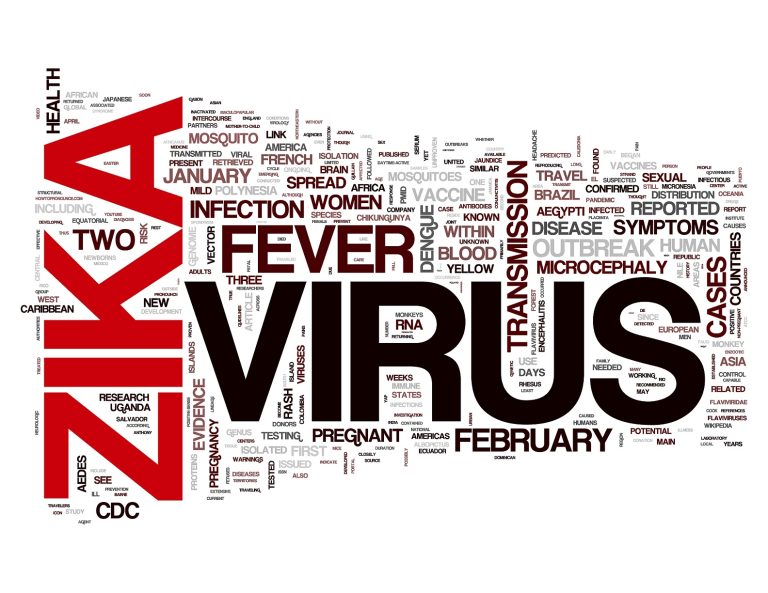
“The only thing we have to fear is fear itself.” —Franklin D. Roosevelt
On a recent trip to Costa Rica I discovered that fear has found its way to my “happy place”—or rather it infected it with Zika virus hysteria. This had been coming, I suppose—with the influx of ex-pats come modern conveniences and the comforts of home and I have felt the world creeping in little by little. Alas, the discomforts of home have also arrived… in the form of pandemic fears.
It’s sad, but not surprising that a campaign to educate Costa Ricans about Zika virus precedes a seatbelt campaign. Families that ride four to a motorbike with puppy in tow are being warned to suspect Zika in any instance of headache, fever or rash. Even comedian and political commentator, John Oliver, who was once my favorite “alternative” news source, referenced “deadly mosquitoes” in his Zika-related segment.
For me, this is another symptom of the fear-based culture that media has been cultivating for many years now. Unfortunately, with governments and media organizations on board, the fears have taken over and “precautionary measures” have made way for the increased use of toxic and previously banned pesticides and a new wave of billion-dollar vaccine research. And since fear-based decisions are vastly different from thoughtful decisions, some pretty crazy things are happening as a result of this year’s global pandemic crisis.
But when I apply a little critical thinking to all of the Zika madness around me, I discover a lot sensationalized reporting and skewed statistics. At the end of the day, it appears that the Brazilian Health Ministry, Centers for Disease Control and Prevention (CDC), National Institutes of Health (NIH), and World Health Organization (WHO) fall far short of uncovering any hard evidence to support their claims and have failed to follow up on the other possible issues linked to the unusual number of microcephaly and birth defects in Brazil.
Yes, I have seen numbers rise as “suspected” cases are reported, as now required by physicians worldwide and encouraged among a now fearful population. There are free hotlines and web pages for anyone who wants to report their headache, fever, red eyes or rash. So, yes, the numbers will go up. Proof, however, is elusive… and expensive. Furthermore, it could be very inconvenient if it goes the wrong way, so it’s unlikely that resources will go that way. Better to just stick to the story and find a vaccine. So I’m finding terms like “presumed cases”, “traces of Zika” and “Zika-linked microcephaly” thrown around quite a lot. Confirmed cases, not so much.
According to the CDC website, under the “Causes and Risk Factors” section of their Microcephaly page it states, “Researchers are studying the possible link between Zika virus infection and microcephaly.”1 This appears to be the only link they have pursued, despite the protests of multiple organizations. In less than four months, the CDC went from reporting a possible connection between a Zika virus outbreak and a surge in microcephaly cases to putting out press on Apr. 16, 2016 concluding that Zika does in fact cause microcephaly,2 based on “rigorous weighing of evidence” as reported in the New England Journal of Medicine.3
Having read that report and many others from sources on every side I can find, it appears that Zika has gotten its infamous reputation not by having the most conclusive evidence, but by incorporating both “presumed and confirmed” cases of Zika virus infections and giving a nod to “biological plausibility.” Incidentally, presumed cases can include people who merely recalled having a headache, fever, joint pain and/or conjunctivitis. In other words, there is no “mounting evidence”, unless I am willing to accept the conveniently low standards that have been applied exclusively to Zika virus research (relative to other speculated causes).
Furthermore, in order to effectively prove any link between Zika and microcephaly, the CDC would first have had to explore the other possible connections to microcephaly. I have yet to come across any study that tested for levels of larvicides or toxic chemicals that were introduced to the drinking water in Brazil. I have also seen no further investigation of the monthly vaccine injections that were mandated for pregnant women in Brazil despite the fact that those vaccines were never tested on pregnant women and were linked to birth defects in the past. And we still have much to learn about the hundreds of thousands of genetically engineered mosquitoes that were released in Brazil.
To date, virtually every health organization website has updated their descriptions of Microcephaly to include Zika virus as a possible cause. According to the “New!” FAQ section on WHO’s website:
Is Zika virus a cause of microcephaly and Guillain-Barré syndrome?
Based on a growing body of preliminary research, there is scientific consensus that Zika virus is a cause of microcephaly and Guillain-Barré syndrome.
While intense efforts continue to reinforce and refine the link between Zika virus and a range of neurological disorders within a rigorous research framework, a stream of recent case report studies as well as a small number of case control and cohort studies, support the conclusion that there exists an association between Zika and microcephaly and Guillain-Barré syndrome.4
What is Zika Virus?
Zika virus is a virus spread by the Aedes mosquito, first discovered in Uganda’s Zika forest in 1947. Typical symptoms include a rash, red eyes, muscle aches and fever. These symptoms only appear in about 20 percent of cases and are relatively mild and of short duration. Previous outbreaks (Yap Island, Micronesia in 2007 and French Polynesia in 2013) were not associated with microcephaly.5 Current outbreaks in Colombia (which counted 31,000 cases including 5,000 pregnant women) also fail to show any Zika-linked microcephaly cases.6
What is Microcephaly?
Microcephaly is a medical condition in which the circumference of the head is smaller than normal because the brain has not developed properly or has stopped growing. It is most often caused by genetic abnormalities, but according to the NIH website:
Babies may also be born with microcephaly if, during pregnancy, their mother abused drugs or alcohol; became infected with a cytomegalovirus, rubella (German measles), varicella (chicken pox) virus, or possibly Zika virus; was exposed to certain toxic chemicals; or had untreated phenylketonuria (PKU, a harmful buildup of the amino acid phenylalanine in the blood). Microcephaly is associated with Down’s syndrome, chromosomal syndromes, and neurometabolic syndromes.
NIH’s new explanation of microcephaly continues…
With viral-induced brain injury, such as with the Zika virus, there is often widespread tissue and cell death leading to brain shrinkage rather than simply impaired growth. The Zika virus is also associated with retinal lesions in about a third of cases, often leading to blindness.
Some children with microcephaly will have normal intelligence and a head that will grow bigger, but they may track below the normal growth curves for head circumference. Some children may have only mild disability, while those with more severe cases may face significant learning disabilities, cognitive delays, or develop other neurological disorders. Many, if not most, cases if Zika microcephaly will be very severe, possibly requiring lifelong intensive care.
So, in the space of a few paragraphs on the NIH website the language changed from “possibly Zika virus” as a cause to “Zika microcephaly” being one of the the most severe types.7
The CDC website is even less subtle. When I look up “microcephaly”, these are the “recommended links” that show up at the top of their page:
Zika Virus Infection
Zika virus is spread to people through mosquito bites. The most common symptoms of Zika virus disease (Zika) are fever, rash, joint pain, and red eye.
Zika Virus Infection and Pregnancy
Zika is primarily transmitted through the bite of infected Aedes mosquitoes. It can also be transmitted from a pregnant mother to her baby during pregnancy or around the time of birth.
These were followed by other links to a number of other articles about “possible associations” between Zika and microcephaly in Brazil. Eventually, I did find a definition similar to the one on the NIH website. Regarding Zika it says:
Some babies with microcephaly have been reported among mothers who were infected with Zika virus while pregnant. Researchers are studying the possible link between Zika virus infection and microcephaly.
There’s that “possible link” again. It’s interesting to note that “possible links” have gone in every direction as far as I can tell, from complete dismissal in some cases to, in this case a “global health emergency” as declared by the WHO on Feb. 1, 2016, just as most of us were first learning that Zika virus even existed.
The Birth of a “Crisis”
On Jan. 20, 2016, Brazil’s health ministry reported 3,893 cases of microcephaly had been recorded since the start of 2015. The greatest number of cases (1,306, or about 35 percent) came out of Pernambuco. Dr. Angela Roche, a pediatrician at the Osvaldo Cruz University Hospital in Recife, Brazil, estimated that, at that time, the hospital had treated more than 300 babies with microcephaly. These numbers all seem rather staggering, and understandably alarming, to a country that claims to have had only 150 cases in 2014.8
By February 2016, the Los Angeles Times reported 4,443 “suspected and confirmed” cases. While Brazil’s Health Ministry was able to link 41 of those to lab-confirmed Zika infections in the mother, it “presumed” that most mothers with microencephalic babies had been infected.
Dr. Manoel Sarno was one of the first to note a spike in microcephaly cases, reporting that he had diagnosed 40 cases in a two-week span in July, either in developing fetuses or babies born to his patients, as well as an increase in miscarriages.9 According to Dr. Sarno, 82% recalled having “Zika-type symptoms”.
There are a lot of numbers here, and more rolling in, but let’s take a look at these numbers and how they’re presented:
The high numbers presented here relate to “reported” cases of microcephaly (3,893) and “suspected and confirmed” cases (4,443). So far, these numbers have nothing to do with Zika, but they are high. It’s important to note, however, that Brazil’s Health Ministry implemented a “more case sensitive” definition of microcephaly to assist with “surveillance” of the emerging problem, changing the parameters from < 30.3cm (for full term females) and 30.7cm (full term males) to <33cm. This surveillance system, initiated in November 2015, was implemented both prospectively and with retrospective review of records dating back to January 2015, resulting in a significant overreporting of microcephaly cases.10
The New York Times later reported:
Of the cases examined so far, 404 have been confirmed as having microcephaly. Only 17 of them tested positive for the Zika virus…
Another 709 babies have been ruled out as having microcephaly … underscoring the risks of false positives making the epidemic appear larger than it actually is. The remaining 3,670 cases are still being investigated.11
That brings us back to 404 confirmed cases of microcephaly—still a relatively high number, but far less than 4,443. Based on this story, we are now looking at 17 babies testing positive for Zika virus out of 404 confirmed cases of microcephaly. Other stories say it was only five cases (out of a study of 3,893).12 Many of the “suspected” cases are based on women recalling “Zika-type symptoms” or coming from areas where “outbreaks” had occurred. However, as mentioned earlier, these symptoms (fever, rash, red eyes, muscle aches) are vague and can be reflective of many conditions, including other mosquito-borne illnesses common to the area that are more likely to cause symptoms. (Incidentally, Dengue fever, from the same mosquito, infects up to 100 million people worldwide each year and results in about 22,000 deaths.)
So far, I’m not seeing such a strong correlation. Furthermore, the numbers are not stacking up in other parts of the world where Zika has become prevalent. As I mentioned earlier, Zika outbreaks in the past have never been associated with cases of microcephaly. The New England Journal of Medicine published preliminary results from a study involving 12,000 pregnant women infected with Zika virus in Colombia showing zero cases of microcephaly.13 So it seems reasonable and responsible to consider other possible culprits in these microcephaly cases in Brazil. Here are some other theories that other groups and organizations have proposed:
Pesticides
Two organizations, Physicians for Crop-Sprayed Towns (PCST) and the Association for Collecctive Health (ACH) have questioned the government’s claims that Zika is to blame for the birth defects coming out of Brazil. They point to the widespread use of an endocrine-disrupting larvicide, pyriproxyfen, in areas where the largest numbers of birth defects were reported. For example, 18 months prior to the surge of birth defects, the Brazilian Health Ministry injected pyriproxyfen into the reservoirs (aka drinking water) in the state of Pernambuco, where 35 percent of Brazil’s microcephaly cases were reported.14
In October of 2012, Brazil also lifted its ban on the spraying of Imidacloprid, a neonicotinoid shown to cause skeletal malformations in animal studies.
Vaccines
In October, 2014, Brazil’s Health Ministry launched an aggressive vaccination campaign, mandating that all pregnant women must receive the pertussis-containing Tdap (tetanus, diptheria and pertussis) vaccine even though the label on the vaccine clearly states that “there are no adequate and well-controlled studies in pregnant women”.15 It is worth mentioning that the pertussis vaccine has previously been linked to brain inflammation and brain damage in infants.
PBS’s “Frontline” featured an 18-year-old mother of a child recently diagnosed with microcephaly who, along with many other women in her community, believed that vaccinations were a likely culprit. She never had any symptoms of Zika virus, but did receive a monthly shot from her public health clinic throughout her pregnancy. According to this mother “I don’t believe it’s a mosquito that causes (microcephaly). That’s an invention of the government… Everyone I know is saying that it’s an out-of-date vaccine.”16
Brazil is currently riddled with poverty and disease. Much of its population suffers from widespread vitamin A and zinc deficiency, which are both required for healthy fetal development. Add to that environmental pollution, toxic pesticide exposure (toxic chemicals are another cause of microcephaly), the introduction of 15 millions genetically modified mosquitoes, an outbreak of Zika virus and a whole host of troubling combinations may arise. Yet, mainstream media sources report that theories about these other possible links have been “debunked” due to lack of scientific evidence. I would say the jury is still very much out on this and it mystifies me that so many avenues have been shut down while we divert resources (upwards of $500 million from the U.S. and additional requests topping $1 billion) go towards the Zika virus.17
So, am I afraid of Zika virus? No. Don’t get me wrong, I’d rather not get any mosquito-borne infection, but Zika virus is the last thing to get in the way of enjoying Pura Vida in one of my favorite places in the world. As for the hysteria that’s put an end to critical thinking and has caused so many of us to direct our attention and resources to one virus (until the next one is “discovered” in 2017)… that’s a bit scary.
Note: The article was reprinted with the author’s permission. It was originally published on the Center for Acupuncture and Herbal Medicine website.
References: References:1 CDC Concludes Zika Causes Microcephaly and Other Birth Defects.
2 See Footnote 1.
3 Zika Virus and Birth Defects—Reviewing the Evidence for Causality.
4 Corli Zika virus and complications: Questions and answers.
5 Association between Zika virus and microcephaly in French Polynesia, 2013–15: a retrospective study.
6
6 Responses
Leave a Reply Cancel reply














Well said…thank you.
Thank you Ann, a good composite of a lot of Zika articles that have displayed here in the Vaccine Reaction, since the beginnings of the WHO-CDC hysteria. Some new information too. I suggest readers go back to past issues of the VR and read again. Another CDC-NIH hoax propagated by US yellow and fascistic media.
Oh and just days ago, CDC announced that Zika is now a “long term” problem….meaning they’re backing down from their wild claims of serious epidemic. Considering Columbia they’ve still got some explaining to do.
NO, THE ZIKA VIRUS DOES NOT CAUSE MICROCEPHALY!
https://www.facebook.com/Arya.Vrilya/posts/522534384621288?hc_location=ufi
Does it seem odd that Dr. Manoel Sarno, one of the first people to observe a “connection” between Zika and microcephaly, appears to have gone on to be one of the authors of this study?
https://wwwnc.cdc.gov/eid/article/25/8/19-0113_article
Cross-Protection of Dengue Virus Infection against Congenital Zika Syndrome, Northeastern Brazil
Dr. Sarno also seems to have authored this paper.. https://academic.oup.com/jid/article/216/12/1501/4386913